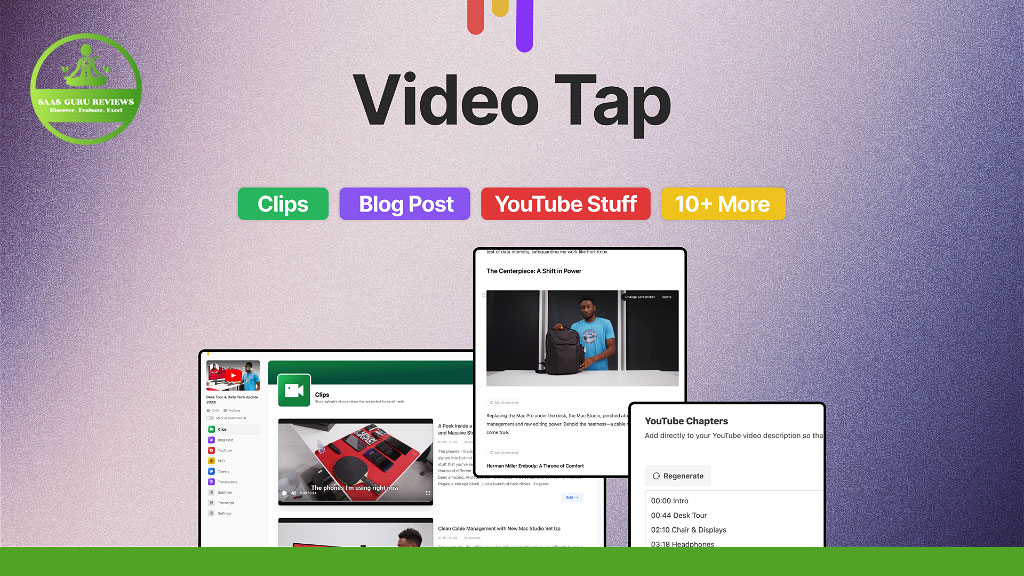In today’s digital age, video content reigns supreme on platforms like YouTube, capturing the attention of millions worldwide. However, the power of text-based content, especially in the form of blog posts, remains undeniable for marketing, SEO, and accessibility purposes. This article is a must-read for content creators, marketers, and anyone looking to expand their digital footprint by automatically converting YouTube videos into compelling blog posts. Discover how to leverage VideoTap and AI technology to transform video content into written form, enhance your marketing strategy, and reach a wider audience.
Article Outline
1. Why Convert YouTube Video Content into Blog Posts?
Learn about the benefits of transforming your video tap content into text, including SEO advantages and reaching a broader audience.
2. The Role of AI in Converting Videos to Text
Discover how AI technology can automatically convert your YouTube videos into transcripts and blog posts, saving you time and effort.
3. Getting Started: Preparing Your Videos for Conversion
Tips on how to make your video content ready for effective conversion, including clear speech and using SEO-friendly video descriptions.
4. How to Use VideoTap for Content Creation
A step-by-step guide on utilizing the VideoTap tool to turn your YouTube content into engaging blog posts.
5. Enhancing Your Blog Posts with SEO Strategies
Learn how to optimize your newly created blog posts for search engines to increase traffic and visibility.
6. The Importance of Social Media in Promoting Your Blog Posts
Strategies for using social media platforms to share your blog posts and increase reach and engagement.
7. Incorporating Video Transcripts into Your Digital Marketing Plan
Find out why including video transcripts in your marketing plan can benefit your overall digital strategy.
8. Creative Ways to Repurpose Video Content into Blog Posts
Explore innovative ideas to transform your video content into blog posts that captivate and inform your audience.
9. Measuring the Success of Your Converted Content
Learn how to track the performance of your blog posts and understand the impact of converting video content into text.
10. Future Trends in Video and Blog Post Content Creation
Gain insights into future trends in content creation and how to stay ahead in the digital content game.
Why Convert YouTube Video Content into Blog Posts?
Converting video content into text form allows you to tap into the vast SEO potential of written content, making it easier for search engines to index and rank your material. Additionally, blog posts cater to those who prefer reading over watching videos, effectively broadening your audience.
The Role of AI in Converting Videos to Text
AI technology has revolutionized content creation, enabling the automatic conversion of video to text with remarkable accuracy. This not only streamlines the content creation process but also ensures that your blog posts are a true reflection of your video content.
Getting Started: Preparing Your Videos for Conversion
To ensure a smooth conversion process, start with high-quality video content. Clear audio, concise speech, and a structured format help AI tools like VideoTap generate accurate transcripts and blog posts.
How to Use VideoTap for Content Creation
VideoTap offers a simple and efficient way to convert your YouTube videos into blog posts. By uploading your video or providing a YouTube URL, VideoTap automatically generates a transcript and converts it into a draft blog post, ready for your final touches.
Enhancing Your Blog Posts with SEO Strategies
Once your video content is converted into text, incorporate SEO strategies such as keyword optimization, meta descriptions, and internal linking to enhance your post’s visibility and search engine ranking.
The Importance of Social Media in Promoting Your Blog Posts
Social media platforms are invaluable for promoting your blog posts. Share your content across platforms like LinkedIn, Twitter, and Facebook to increase reach and engage with your audience.
Incorporating Video Transcripts into Your Digital Marketing Plan
Video transcripts not only make your content accessible to a wider audience, including those with hearing impairments, but they also enrich your website’s content, improving SEO and user engagement.
Creative Ways to Repurpose Video Tap Content into Blog Posts
Think beyond direct conversion by using video content as a springboard for blog posts. Summarize the video, expand on its topics, or create a series of posts based on a single video to keep your content fresh and engaging.
Measuring the Success of Your Converted Content
Use analytics tools to track the performance of your blog posts. Look at metrics such as page views, time spent on page, and bounce rate to gauge the success of your content conversion efforts.
Future Trends in Video and Blog Post Content Creation
Stay abreast of content creation trends, such as the rise of short-form videos and AI-generated content. Adapting to these trends will ensure your content remains relevant and engaging.
Summary of Key Points
- Converting YouTube videos into blog posts expands your reach and improves SEO.
- AI technology like VideoTap simplifies the conversion process.
- Prepare your videos for conversion by ensuring clear audio and structured content.
- Use SEO strategies to enhance the visibility of your converted blog posts.
- Promote your blog posts on social media to increase reach and engagement.
- Incorporate video transcripts into your digital marketing strategy for broader accessibility.
- Be creative in repurposing video content into engaging blog posts.
- Measure the success of your converted content with analytics tools.
- Keep an eye on future content creation trends to stay ahead.
By following this guide, you can effectively leverage your video content to create engaging, SEO-friendly blog posts that captivate a wider audience and enhance your digital marketing efforts.



